Salmon Ruins Museum awaits visitors locked out of national parks, but few are heading there
Ancestral Chacoan pueblo remains open during shutdown
 John R. Moses
John R. Moses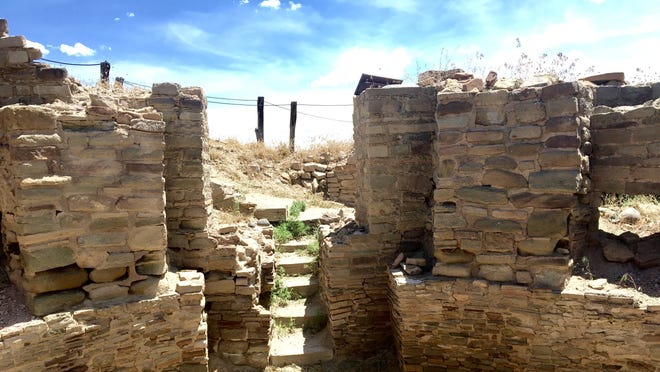
- The Salmon Ruins Museum is located at 6131 U.S. Highway 64 near downtown Bloomfield.
- An estimated 300 residents living in the complex between 1088 and 1288.
- It costs $4 for adults to enter the museum, $3 for seniors and $1 children 6 to 16.
BLOOMFIELD — A stiff wind blowing across an empty parking lot swung the sign outside the Salmon Ruins Museum, slowly back and forth.
Inside the museum, weekend worker Alicia Salazar was having a quiet afternoon. Two visitors had arrived by noon. And by 2:30 p.m., two more had come through the doors.
When the federal government shut down in December, the folks running the Salmon Ruins Museum hoped to see an uptick in visitors to the museum, and the ancestral Chacoan pueblo that sprawls behind the preserved Salmon family homestead.
But even with the Chaco Culture National Historical Park and the Aztec Ruins sites shuttered by the National Park Service, winter visitors aren't rushing to come to the museum.
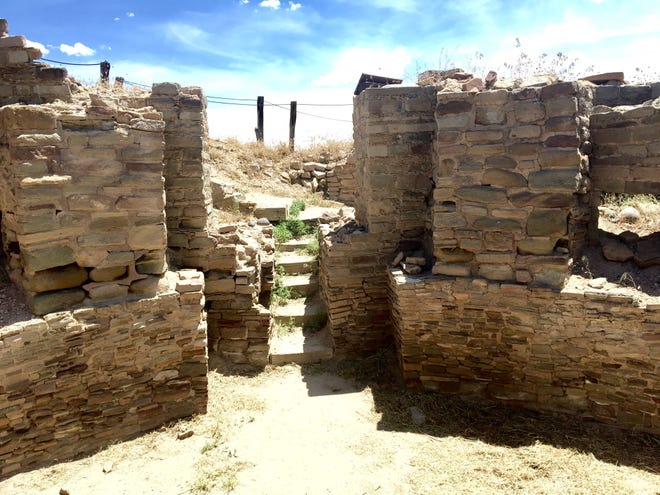
Salazar wondered if the some thought the Bloomfield museum was also closed.
"We're open," she said. "We're here."
Museum management was also hoping for a visitation boost, but kept in mind that cold weather months are usually not busy times.
“That really was my hope,” said the museum’s 11-year business manager, Brandi Amarilla. “I really thought we might experience more visitation.”
Instead, the site that usually draws about 5,000 people per year served 257 recent visitors.
But that does make for a far more personal experience than fighting a crowd, Amarilla noted.
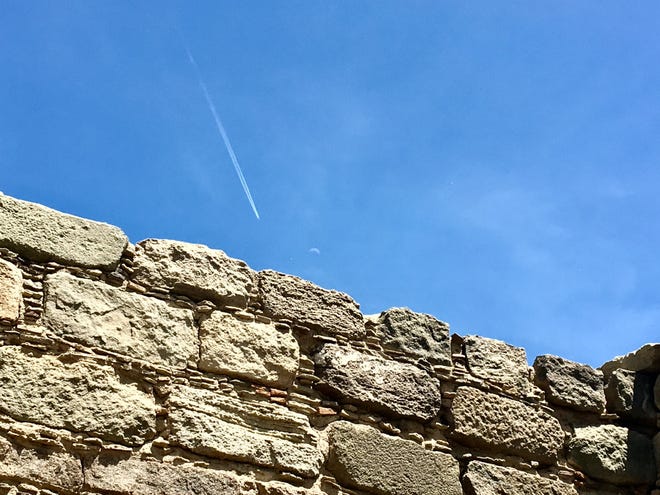
The Salmon Pueblo site is far more accessible than the Chaco ruins, about 47 miles to the south. Chaco Canyon is acclaimed for design, cultural value and its state of preservation, but is down a lengthy road and the park closed by the shutdown.
And while the Aztec Ruins site, which contains a restored kiva and a picnic grounds, is free to enter, you can’t enter them right now due to the shutdown.
That leaves the Salmon Pueblo, tucked just off U.S. Highway 64 downhill from the museum that bears its name.

It costs $4 for adults to enter the museum, $3 for seniors and $1 children 6 to 16.
Once inside, there is a collection of pottery and other artifacts unearthed during excavations between 1971 and 1978. The museum opened in 1973.
The Salmon Pueblo settlement is an example of how Anasazi architects created multistory structures with stone, adobe mortar and cut wood.
Rising on a spot just above the San Juan River, the complex once had as many as 300 rooms.
It was linked to other settlements by water and well-traveled paths, and its residents were known to trade with those of other settlements, including residents of the Chaco Canyon and Mesa Verde-area communities.
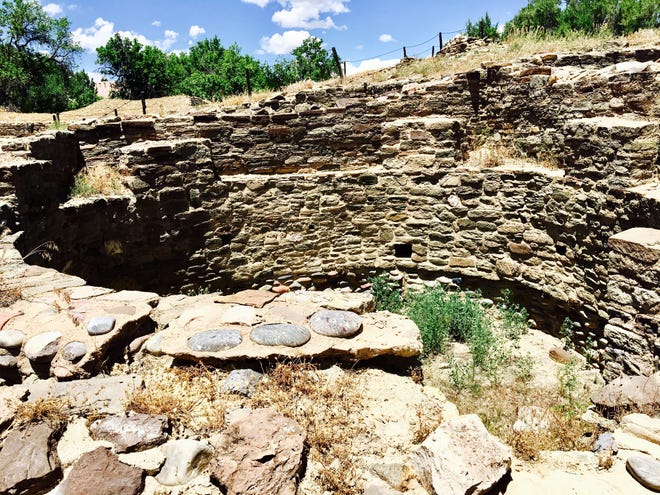
At one point, there were an estimated 300 residents living in the complex between 1088 and 1288, when many of the structures were damaged by fire. Archaeologists determined that as many as 20 bodies were cremated at the tower kiva site.
Visitors may borrow a trail guide that lists, by numbers, the uses of the many rooms that stretch along a sometimes narrow and steep trail. Some areas can be entered.
Reaching the ruins can be accomplished by navigating the steep trail that drops behind the museum. But the ruins also have a small parking area at the bottom of the hill for those not blessed with Olympic-quality hamstrings and who have paid for admission.
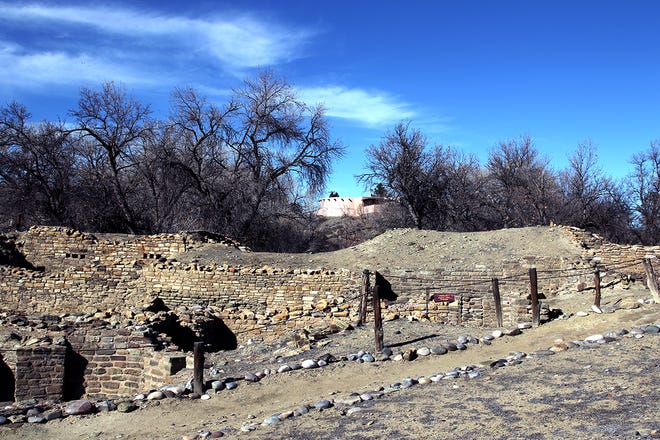
Amarilla said last week there were 15 visitors, and she said the snowy weather in December and earlier this month is probably partly to blame for the low overall attendance numbers recently.
“May through September are typically our busiest months,” she said.
For more information, call the museum at 505-632-2013. The museum is located at 6131 U.S. Highway 64 near downtown Bloomfield. Museum staff said the museum would be open Monday, which is the Martin Luther King Day federal holiday. Weekdays the museum is open from 8 a.m. to 5 p.m. Saturday hours are 9 a.m. to 5 p.m. and Sundays the museum is open from noon to 5 p.m.

Editor John R. Moses can be reached via email at jmoses@daily-times.com or by phone at 505-564-4624.